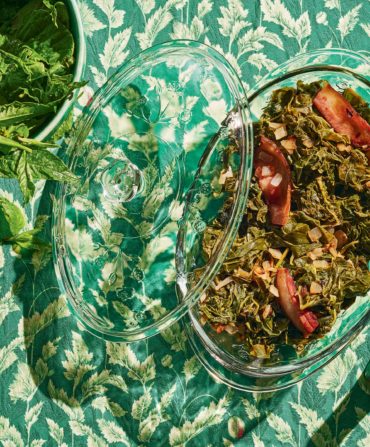Celebrating regional dishes, we always feel a pang of regret. Place an icon like Nashville hot chicken, say, or New Orleans gumbo on a pedestal, and it’s inevitable that its culinary siblings—no less delicious, no less geographically distinct—are missing out on the spotlight. What chance does corned ham have in the whole-hog barbecue mecca of Eastern North Carolina? Or a street vendor’s rice calas sharing the neighborhood with Café Du Monde’s sugary beignets? Here in the South Carolina Lowcountry, shrimp and grits never fails to steal the show from our beloved chicken bog (and from many other dishes).
Perhaps the best word to describe chicken bog is one used by the late culinary historian Joseph E. Dabney, author of the 2010 book The Food, Folklore, and Art of Lowcountry Cooking: “unheralded.” Proof of this: While we grew up just a couple of hours down the interstate from bog’s ground zero in South Carolina’s Pee Dee region, encompassing the towns of Florence, Conway, and Loris (which hosted its fortieth annual Loris Bog-Off Festival last year), our own first taste of chicken bog only came when we were in our thirties, in the Church Street kitchen of our friend, the Charleston painter and arts educator Janet Hopkins. We devoured it. Richly flavored—and alluringly, aptly named—this semi-soggy chicken-sausage-and-rice medley was comfort’s essence.
Chicken bog is like a wetter jambalaya or pilau, and, like those dishes, has origins in the West African rice kitchen that proliferated in the state during the years enslaved Africans worked rice plantations from the Pee Dee region down to what we now call the ACE Basin. Some writers (Dabney included) surmise from oral histories a connection between the “boggier” preparation and the fact that the dish was typically cooked outdoors in large quantities, a community repast on the order of Kentucky burgoo or Virginia’s Brunswick stew, concentrating and complexifying over hours.
Our own recipe brings the dish indoors. And while traditionalists may tut that we serve the stewed chicken over cooked rice (a more accessible preparation for home cooks as opposed to cooking up the rice with the chicken in its own broth), there’s no scrimping on chicken-love in our version, as we preserve the giblets that traditionally give this stew such a deep and rich, rustic flavor. No regrets here.
This article appears in the August/September 2020 issue of Garden & Gun. Start your subscription here or give a gift subscription here.








